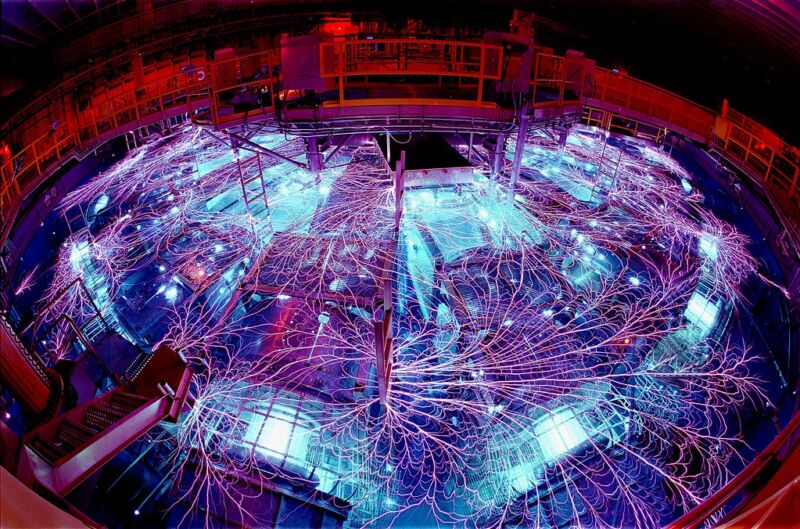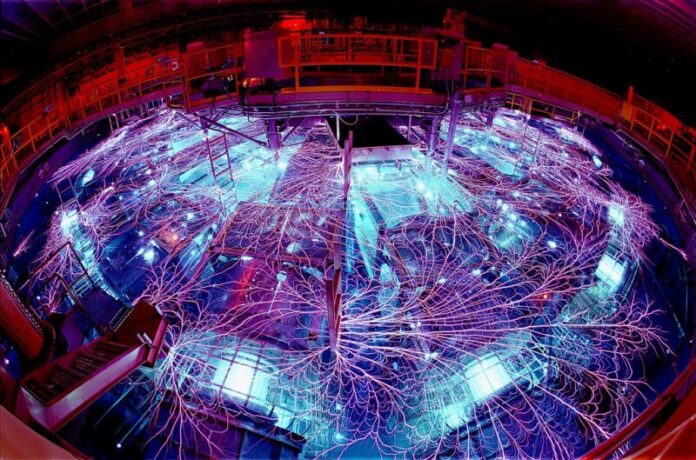
Enlarge / Sandia National Labs' Z machine in action. (credit: Randy Montoya)
The old joke about the dinosaurs going extinct because they didn't have a space program may be overselling the need for one. It turns out you can probably divert some of the more threatening asteroids with nothing more than the products of a nuclear weapons program. But it doesn't work the way you probably think it does.
Obviously, nuclear weapons are great at destroying things, so why not asteroids? That won't work because a lot of the damage that nukes generate comes from the blast wave as it propagates through the atmosphere. And the environment around asteroids is notably short on atmosphere, so blast waves won't happen. But you can still use a nuclear weapon's radiation to vaporize part of the asteroid's surface, creating a very temporary, very hot atmosphere on one side of the asteroid. This should create enough pressure to deflect the asteroid's orbit, potentially causing it to fly safely past Earth.
But will it work? Some scientists at Sandia National Lab have decided to tackle a very cool question with one of the cooler bits of hardware on Earth: the Z machine, which can create a pulse of X-rays bright enough to vaporize rock. They estimate that a nuclear weapon can probably impart enough force to deflect asteroids as large as 4 kilometers across.
Read 12 remaining paragraphs | Comments
Ars Technica - All contentContinue reading/original-link]




